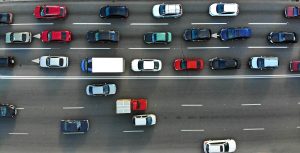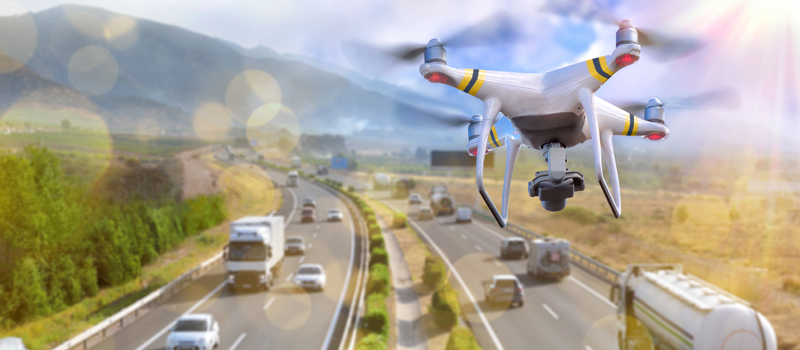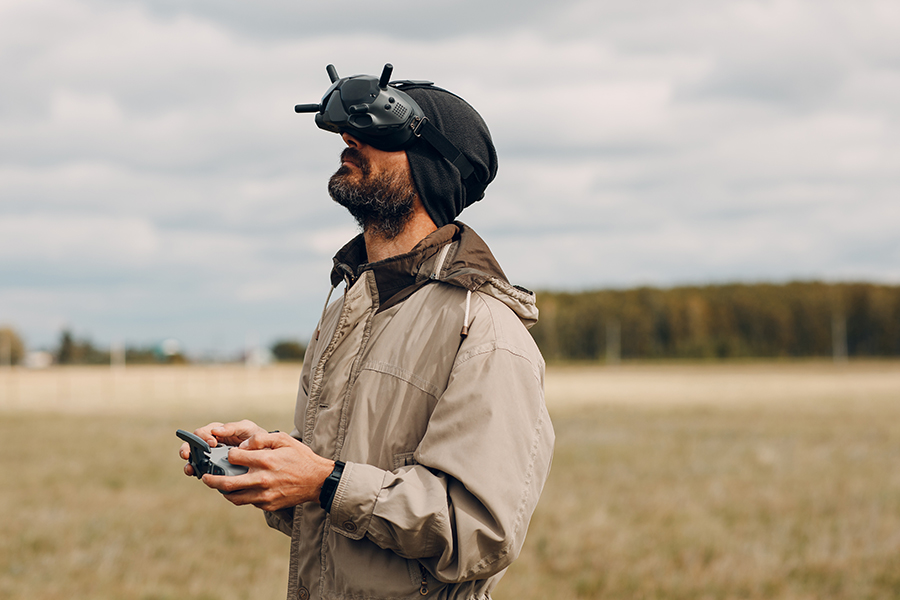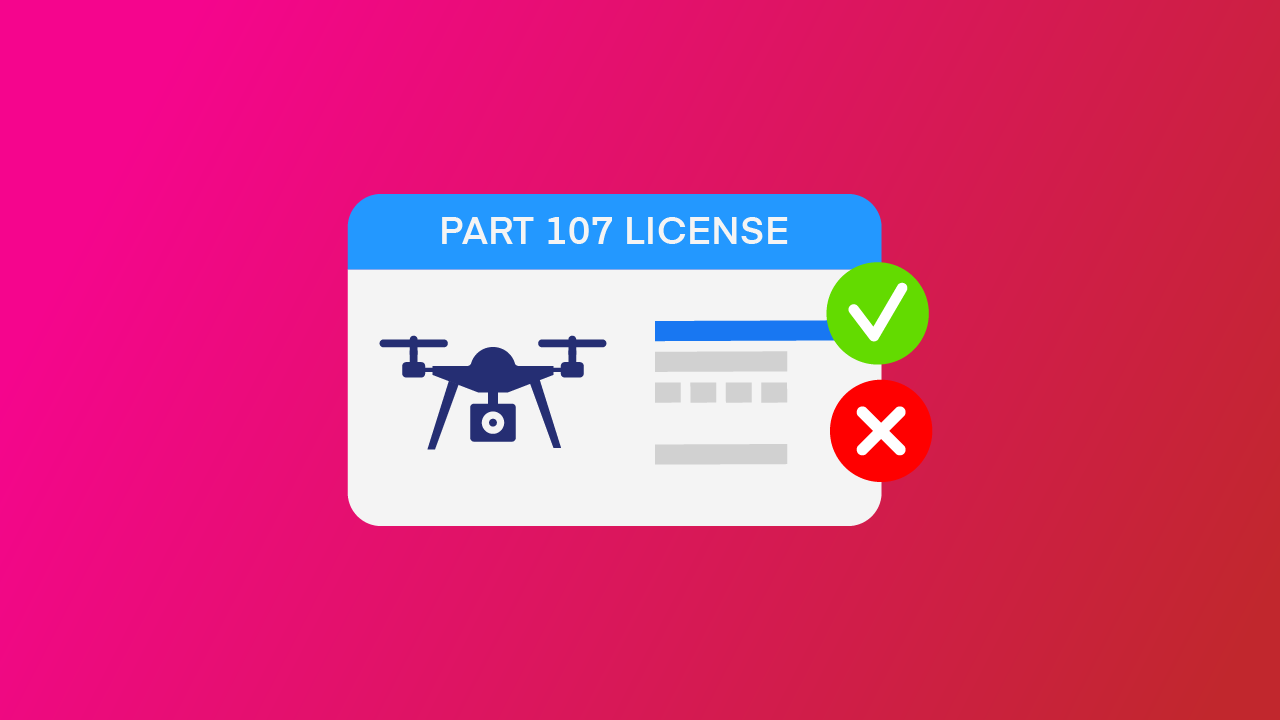If you’re a commercial drone pilot, then you’re probably no stranger to finding yourself in a situation where you have to fly a drone in difficult circumstances. This is when the Part 107 restrictions feel particularly restrictive – even when you recognize how invaluable they are for airspace safety.
In this article, we’re closing in on one specific drone flight restriction – that of flying over moving vehicles. What does the FAA say about this and why it such an important hazard? What can a licensed drone pilot do if a job calls for flying over moving vehicles?
What does the FAA say about drone flight over moving vehicles?
This may not be known to many, but there are actually two provisions under Part 107 that pertain to drone flight over moving vehicles. The more commonly known of these is Section 107.39 otherwise known as “Operations over people”. The section states:
“No person may operate a small unmanned aircraft over a human being unless that human being is (b) Located under a covered structure or inside a stationary vehicle that can provide reasonable protection from a falling small unmanned aircraft.”

What this section states is that flying a drone over a non-participating person is allowed only if the person is under the protection of a covered structure or a stationary vehicle. The “stationary” qualifier is critical here, as it means that the exemption does not apply to moving vehicles.
The second provision of relevance in this topic is Section 107.19, which states:
“(c) The remote pilot in command must ensure that the small unmanned aircraft will pose no undue hazard to other people, other aircraft, or other property in the event of a loss of control of the aircraft for any reason.”
Although the provision does not specifically mention the “moving vehicles” entity, vehicles (whether stationary or in motion) are also considered under the “other property” banner. In fact, Section 107.19 is more all-encompassing as it requires drone pilots to avoid not just flying over vehicles but also to avoid causing hazards in case of a loss of control.
In simple terms, the two provisions imply that drone pilots should stay away from moving vehicles as much as possible. This can pose challenges for commercial drone operations that need to take place over busy streets and highways.
What hazards are being avoided by this restriction?
What’s the big deal with moving vehicles anyway? Don’t they provide ample protection for the people inside them?
While the FAA has no problem with drone flight over stationary vehicles, moving vehicles are a different matter. Moreover, the FAA further defines a moving vehicle as a vehicle in a “state of operation”. This includes vehicles with running motors, even if they are idle.
There are two types of hazards that this restriction seeks to address:
- Vehicular accidents caused by a drone crash
- Distraction of operators of moving vehicles
The first item is pretty self-explanatory. For the most part, a drone crash is a self-contained event. It damages the drone and whichever piece of property it crashes on. The same cannot be said for a busy highway. A drone crash near or over a moving vehicle may cause that vehicle to lose control, therefore causing greater property damage or personal injury. This danger multiplies with an increasing number of vehicles on the road.
Moreover, the FAA deems that the impact between a drone and a moving vehicle would result in an unacceptable level of risk. This is quite reasonable – the potential damage and injury of a vehicular accident are a lot more significant compared to a drone crash.
The FAA also wants to avoid scenarios where a drone flies over a moving vehicle, causing the driver to be distracted. The thing about drones is that they are still novel and new to most people’s eyes, making them much more interesting than the usual helicopter or commercial aircraft. Although this may not be the case for all drivers, even the remote possibility of such a case happening is enough for the FAA to impose such a restriction.
What can a drone pilot do to work around this restriction?
Although Section 107.39 can technically be waived by the FAA upon request, almost all the waivers granted for this provision are only for flight over people. Very rarely does the FAA grant waivers for flight over moving vehicles, likely because of the immense risk involved.
Given that the chances of securing a waiver are slim, what other options are there for drone pilots? The best way to get around the restriction is to simply avoid having to fly over busy highways. Drone operations that take place over highways can be scheduled on days when there is low traffic, making it possible to do a quick fly-by without passing over a moving vehicle.

Conversely, aerial surveys or shoots can also be deliberately designed to avoid busy highways. This doesn’t exactly involve a lot of planning but may require that you reduce the scope of the job. If you are taking on this strategy for a commercial gig, make sure that the client knows that it was done to avoid regulatory and legal issues.
The sole exception to the rule is if the vehicle is “directly participating” in the operations. This is an exception you can cite if you are shooting an aerial video specifically of a vehicle as it rolls along a highway. If you have other vehicles involved as part of the flight crew, then you can also fly over those as they are deemed to be aware of the drone’s presence and location.
Final thoughts
The FAA’s restriction on drone flight over moving vehicles is one that they very rarely waive and for a good reason – there’s just an exceptional level of risk involved. This is especially true if a drone flies over a busy highway. With the probability of a drone causing a massive vehicular mishap, there’s very little chance of the FAA granting their permission for such an activity.
Our recommendation is to find creative ways to conduct your operations without violating this flight restriction. Keep in mind that you MAY cross highways, as long as no vehicles are moving right under the drone. With a bit of careful planning, this restriction shouldn’t be something that will severely limit your drone operations.



